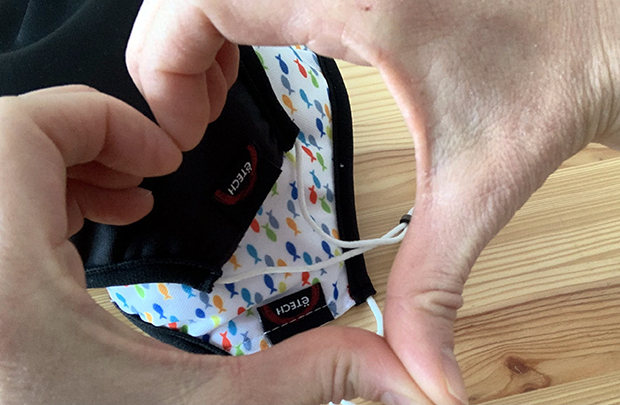The purpose of this Legault government budget, introduced in inflationary times, where there is still economic uncertainty, is mainly to give taxpayers, especially the middle class, some room to breathe.
The government honoured its election promise and passed one of the largest tax cuts in history, totalling $9.2B over six years, that is, $1.7B per year. Such a reduction could be $814 per person as of 2023 and would benefit 4.6 million Quebeckers.
This tax cut will not impact services to the population because it will be funded by more moderate growth in payments to the Generations Fund. Despite the economic downturn this year and the risk of recession, the government remains on course for a balanced budget in 2027-2028, as had also been planned in the March 2022 budget. Confident in its success, the government even announced that it would lift the suspension of the Balanced Budget Act in order to modernize it.
The budget balance for 2023-2024 would be a deficit of $3,900B, after a $2.3B payment to the Generations Fund, without using the stabilization reserve. It should be noted that the $3,998B deficit forecast in the March 2022 budget for the 2023-2024 year was almost identical to the one forecast this year in the current budget.
The health and education sectors remain a priority…
With regard to the health sector, the budget plans close to $5.6B over five years to make the health network more efficient and human. As for education, a priority in this budget, $2.3B is allocated between now and 2027-2028 to unlock the potential of the younger generation, in particular, $1.5B to help youths succeed and $717M to promote access, retention and graduation.
…and various measures to bolster the province’s productivity, support the regions and stimulate labour are also on the agenda
To do this, the government will inject $888M over five years. Among the initiatives retained, there is the introduction of a new tax holiday for large investment projects. The current measure comes to an end on December 31, 2024. The new tax holiday for large investment projects of over $100M will help:
- Reach a greater number of activity sectors;
- Provide an enhanced incentive that could now represent up to 25% of eligible investments, depending on the location of the project in Québec.
This new tax holiday represents $373M of financial support for businesses over the next five year. It should contribute to the realization of close to 100 new projects in Québec by the end of 2029 and yield investments of more than $24B in the end.
As for accelerating the deployment of innovation zones, the government plans on investing $100M over five years to add new zones to existing ones in Sherbrooke and Bromont.
Other measures to contribute to the prosperity of the regions have also been announced, with investments totalling $1.4B, including new money to increase food autonomy ($175M) and to support the tourism offer ($75M). With regard to transportation, certain measures aim to better serve remote communities, and a budget amount of $722M has been allocated to support the revival of public transportation, diversify the transportation offering for people with reduced mobility, maintain essential regional air services and invest in safe and effective land transportation infrastructures.
On the labour front, the government has invested in the mastery of the French language to further promote the economic and cultural integration of immigrants. An amount of $510M over five years, $214M of which will be allocated to increase the support offered for learning French through the Québec Francization program.
Furthermore, the government has opted to renew the re-qualification and enhancement of skills component of the Programme de formations de courte durée (COUD), which represents an investment of $100M.
Where tax matters are concerned, and in an effort to encourage experienced workers aged 65 and over to remain in the labour market, the government is announcing changes to the QPP that will come into effect on January 1, 2024, namely:
- the option to discontinue contributions to the QPP for people aged 65 and over who are receiving a retirement pension;
- the introduction of pension protection for workers aged 65 and over earning less than their career average earnings.
In closing, of note is the government’s desire to strengthen tax compliance regarding cryptoassets. According to the tax authorities, since virtual currencies are not legal tender in Canada, they are considered to be commodities, not money.
Consequently, the budget specifies that “for income tax purposes, transactions made using virtual currencies are considered barter transactions. […] When a transaction is carried out with or in respect of a virtual currency and generates tax consequences, a taxpayer must generally report it to the tax authorities.”
Therefore, in order to allow Revenu Québec to have the tools needed to monitor developments in this sector and carry out adequate tax controls, a bill will be adopted and new provisions will apply as of the date on which the bill is assented to.
For more information on the tax measures announced in this budget, please download this document.
You could also like to read
Next article
A Gaspésie SME has developed a medical mask that can be washed a hundred times and retain its fine particle filtration capacity—an innovation that will open the doors to the global market.
Our team is very pleased to be supporting this innovative company during its development phases. We spoke with Frëtt Design and Frëtt Solutions founder, Michelle Secours, to shed some light on her success and her organization’s challenges.
Frëtt Solutions is the eco-efficient technical textile R&D division of Frëtt Design, a company that designs and manufactures ethical and eco-responsible clothing in Caplan, Gaspésie. The company recently received Health Canada medical device license approval for its reusable masks. This is a big step forward as the healthcare system is one of the largest users of disposable masks.
“Single-use masks are a real danger to the environment. They release millions of plastic microfibres that are not biodegradable. With the quantity of masks that are used and thrown away every day, we had to find a solution to avoid an ecological disaster,” says Michelle Secours.
From ethical clothing to an eco-responsible medical mask
Sensitive to the impact of textile production on the environment, Michelle Secours continues with Frëtt Solutions the eco-responsible mission of Frëtt Design, the company she founded in 1997. For 25 years, the SME has been using mostly natural and ecological materials such as hemp, merino wool or organic cottons in the manufacturing of its clothing for women, men and children.
The company responded to the health emergency at the beginning of the pandemic by starting to manufacture washable barrier masks for the general public. At the same time, a small core of employees dedicated themselves to the development of medical grade masks that could be reused by washing and disinfecting to meet a growing demand from the healthcare community.
“Each of our masks replaces 200 disposable masks. We have succeeded in achieving results that no one else has been able to match, both in performance and sustainability,” says the entrepreneur proudly.

Patented reusable medical mask
The learning curve was steep for her and her team. “We had to learn everything about the particle filtration capabilities of fabrics. We tested more than 130 combinations of multi-layered materials, so we knew what worked and what didn’t. Our goal was to create a washable mask that would meet the criteria of international standards for personal protective equipment in terms of breathability, efficiency and comfort.”
Her team worked for more than a year to develop the etrëma reusable multilayer surgical mask, which can be washed up to 100 times before being recycled.
The etrëma mask uses a textile filtering technology, called ëncore®, which is now patented in more than 60 countries. It meets the highest criteria of protection and product safety according to international standards for medical devices. Its development was the result of a collaboration between Frëtt Solutions and several experts from international research centres, laboratories and health institutions.
Conquering new markets
The company has met some of the challenges with panache and is continuing to build on its momentum.
License and certifications
Now that it has received Health Canada approval with the Medical Device Establishment License, as well as European certifications, Frëtt Solutions is ready to produce its etrëma masks on a large scale and begin marketing in clinical settings.
“However, it has taken a long time to get approval from the CNESST and Health Canada. In the latter case, the response came at the end of 2022, which now opens the doors to the healthcare sector,” specifies Michelle Secours.

New distribution channels
To do this, the company has to open up distribution channels that differ significantly from those it uses for its fashion products. In addition to its workshop-boutique in Caplan, the company sells its clothing online, in its Montréal boutique and at various events.
Its masks and other medical products in development are intended for the institutional sector, such as hospitals and other healthcare facilities.
“We also target professionals, such as dentists, medical clinics and anything related to close care, such as aesthetics,” says Michelle Secours.
Mask reprocessing procedure
In order to expand the use of this reusable mask, how it is used in healthcare settings must be reviewed, such as adopting a mask reprocessing procedure, which takes some time to implement.
Some hospitals are currently conducting pilot projects in Québec and elsewhere in Canada. Private clinics are also testing the mask.
While waiting to deploy across the entire health network, the company is working on other development projects based on its patented technology, including N95 masks and washable and reusable personal protective equipment (PPE).
Reinventing the business
Development of this innovation marks a new turning point for Frëtt Design. This is not the first time that the SME has innovated. In its early days, it built a solid reputation with industrial knitting techniques and upcycling principles that reused raw materials and enhanced their value.
“We sold our designs in over 100 stores worldwide, including major retailers like Bloomingdale’s and Saks Fifth Avenue in New York,” says Michelle Secours.
Then, as textile manufacturing shifted to Asian countries, it became increasingly difficult for Frëtt Design to continue producing locally. It was at this point that she reviewed her company’s mission.
The creation of the Frëtt Solutions division offers her organization new inspiring opportunities.
“We are proof that we can innovate even if we are not in a large urban center and do not have large R&D resources. Most importantly, we continue to do our part for the health of the environment.”
Next article
On International Women’s Rights Day, let’s celebrate where we are and look at the ground we still have to cover to achieve equality.
While we have come a long way in terms of women’s contribution to our success, we haven’t yet reached our goal: gender equality in everything, everywhere, all the time.
That’s why Grant Thornton International’s Corporate Social Responsibility (CSR) team addressed this critical issue in Women in Business 2023: The push for parity, a highly insightful report released by our global network.
This report argues that if companies do not implement a culture of empowerment through flexible work arrangements, or take additional steps to support women’s access to leadership positions, by 2025 women will hold only 34% of those positions—a far cry from the UN’s goal of parity by 2030.
Fortunately, at Raymond Chabot Grant Thornton, we have a solid record of gender parity in management positions, 48% of which are held by women.
Daring to open the door and cross the threshold
Drawing on the experiences of inspiring women who have succeeded in becoming managers, such as Mireille Dallaire, Senior Manager – Business Systems, Information Technology at our firm, this report includes a list of the actions needed to change things for the benefit of future generations.
“We are fortunate to have been born in countries where many doors are open to us. We therefore have a duty to encourage our girls and boys to think critically about what is happening, here and in the world, in terms of rights disparities. We need to teach our girls to be bold, to say what they want and what they want to accomplish, like becoming a CEO, for example,” says Mireille.
DigitALL: Innovation and technology for gender equality
This year, the UN has chosen to mark International Women’s Day with the theme “DigitALL: Innovation and technology for gender equality”. We wanted to interview Mireille to understand what motivated her to enter an industry where women managers—and women overall—are underrepresented.
“When the opportunity arose to implement an ERP (enterprise resource planning) system, I didn’t really think about whether or not it was something I was capable of implementing. I thought, ‘I like systems so I’m going for it!’ My background in accounting, assurance and compliance could have hindered me as this new path presented a very big change in direction. But the most important thing is to be on the right path, and for me, that’s systems,” says Mireille.
Our 75th anniversary is a great opportunity to reflect on how far we have come within our firm, and in society, to close the rights-and-privileges gender gap. It also allows us to continue to make strides in CSR, including acting on the United Nations’ Sustainable Development Goal #5: Gender equality.
Next article
IAS 36 Impairment of Assets is not a new standard and, while many of its requirements are familiar, an impairment review of assets (either tangible or intangible) is frequently challenging to apply in practice. This is because IAS 36’s guidance is detailed, prescriptive and complex in some areas.
The Insights into IAS 36 series has been written to assist preparers of financial statements and those charged with the governance of reporting entities to understand the requirements set out in IAS 36 and revisit some areas where confusion has been seen in practice.
The final two publications in the Insights into IAS 36 series cover disclosure requirements when an entity recognizes an impairment loss and/or reversal during the reporting period and considerations for some regularly encountered issues when applying the standard:
- Presentation and disclosure;
- Other impairment issues.
The publications mentioned above follow this IFRS Adviser Alert.







